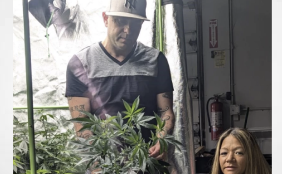CA DOJ Medical Cannabis Rule Summary -The 16-page document from Attorney General Xavier Becerra’s office is “a good, solid first step” for enforcement, Kazan said. It spells out what is and what isn’t lawful grow.“I appreciate that it is coming from the top,” he said. The document summarizes more than 20 years of state laws, regulations, and guidelines concerning the growing, distribution and transportation of medicinal cannabis in the Golden State. The purpose of the release was “to reflect the evolution of cannabis legalization in California,” according to a statement from the Attorney General’s Office.
California has no uniform marijuana policy despite voter-approved initiatives that have legalized medicinal and recreational cannabis. Each local government is given latitude to decide for itself whether to allow cannabis businesses to operate. When it comes to seizing product or even involving the federal government, Spiker said law enforcement in the past has tended to ‘shoot first, aim later.’ This document provides police with a reminder that “we have a licensed, legal industry, let’s make sure that’s in the back of our minds,” he said. The summary also lets medicinal cannabis patients know both their rights and their responsibilities, he said.” I think they’re collating all these different laws and regulations into one document for the medical industry,” Spiker said.
CA DOJ Medical Cannabis
In 1996, California voters approved Proposition 215, the Compassionate Use Act of 1996, which exempted certain patients and their primary caregivers from criminal liability under state law for the possession and cultivation of marijuana for medicinal use. (Health & Saf. Code, § 11362.5.1 ) In 2003, the California Legislature enacted Senate Bill 420, the Medical Marijuana Program Act, which clarified requirements related to medical marijuana. Pursuant to the legislation, the Office of the Attorney General is required to adopt “guidelines to ensure the security and non-diversion of cannabis grown for medical use.” (§ 11362.81, subd. (d).) To fulfill this mandate, the Office of the Attorney General is re-issuing and updating these guidelines to (1) ensure that cannabis grown for medicinal purposes remains secure and does not find its way to non-patients or illicit markets; (2) help law enforcement agencies perform their duties effectively and in accordance with California law; and, (3) help patients and primary caregivers understand how they may cultivate, transport, deliver, possess, and use medicinal cannabis under California law.2
We are going to have quite a bit to say about the document…as a start…
- There is no mention or discussion of Attorney General Brown’s 2008 Memorandum
- There is no acknowledgement of possible limitations due ot the “safe and affordable” language in Proposition 215.
- The guidelines do not distinguish between “collectives,” “cooperatives” and “Chapter 22 cooperative associations. “CCA”s”
Our take away for medical cannabis is, that the only thing that has really changed is you had better get a license.


















